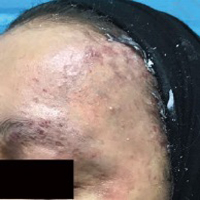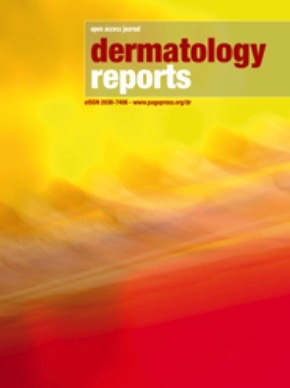Nd:YAG laser in association with pulsed dye laser for the treatment of PHACES syndrome

All claims expressed in this article are solely those of the authors and do not necessarily represent those of their affiliated organizations, or those of the publisher, the editors and the reviewers. Any product that may be evaluated in this article or claim that may be made by its manufacturer is not guaranteed or endorsed by the publisher.
Authors
The acronym PHACES stands for posterior fossa malformations, hemangiomas, arterial anomalies (cardiovascular or cerebrovascular), coarctation of the aorta/cardiac defects, eye abnormalities, and sternal defects. The characteristic dermatological clinical manifestation of PHACES syndrome is a segmental and extensive hemangioma, usually on the face. A combined therapy with 1,064 nm Nd-YAG/595-nm pulsed dye laser was performed in a young 15-year-old patient with PHACES syndrome, who presented a hemangioma on the left side of the face, located in the periorbital region. A first session with Nd-YAG laser (2,5 mm spot size, fluence 100 J/cm2, pulse duration 7 ms) for the treatment of teleangectasias and subsequently, three treatment sessions with pulsed dye laser (12 mm spot size, fluence 7 J/cm2, pulse duration 0,5 ms, repetition rate 0,6 Hz), once every 2 months, were performed. No postoperative complications were recorded, except for transient purpura after the pulsed dye laser sessions. The vascular lesion had a decrease in size bigger than 75%, and these results was maintained 6 months after the last treatment. Combined therapy Nd- YAG/pulsed dye laser is an effective and noninvasive procedure for hemangiomas in patients with PHACES syndrome.








